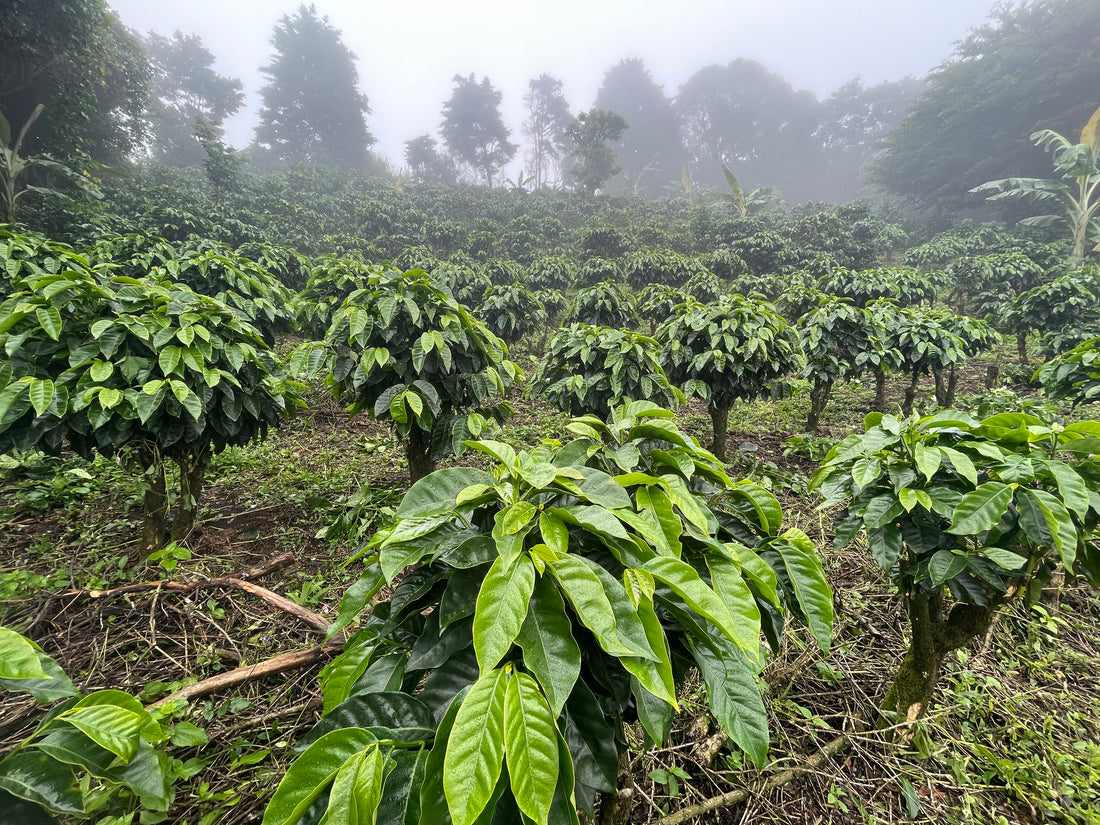
Costa Rica's 8 Coffee Growing Regions
Share
Costa Rica’s rugged topography paired with fertile volcanic soil and ideal climate has enabled the small Central American nation to become renowned for producing exceptional, high-quality Arabica coffee beans.
The country’s eight defined growing regions each lend distinct characteristics to harvested beans based on respective altitude, rainfall, soil constitution and processing methods.
Getting acquainted with the profiles of Costa Rica’s premier coffee regions provides essential context for discerning specialty coffee connoisseurs. Tracing coveted estate beans back to their origin on a micro-climate rich hillside or highland estate connects dedicated drinkers more intimately with the fruits of farmers’ labor.
This overview breaks down the defining features, prominent flavors, and lead cooperatives shaping each essential Costa Rican coffee region.
1. West Valley
Encompassing lush farmland surrounding the capital city San Jose, West Valley enjoys consistent rains and altitudes ranging 1,300 to 1,650 meters.
Signature smooth body and pleasant acidity define the region, with silky structure punctuated by hints of lemon and honey in the cup. Prominent growing areas include Alajuela, San Ramon and Atenas.
2. Central Valley
Home to the greatest concentration of coffee estates thanks to extremely fertile soil, the vast Central Valley hosts heavy rainfall and varied elevations allowing both Catuai and Caturra bean varieties to thrive.
Located around 1,400 to 1,700 meters, mellow citrus notes mingle with cocoa for dynamic cups often described as juicy or jammy. Cartago province shines brightest among other bucolic locales like Orosi, Turrialba and the Orosí River Valley.
3. Tres Rios
Three rivers lend their name to this region: the Tárcoles River, the Torres River and the Tiribí River. Bright Climate conditions bolstered by showers off of surrounding hillsides and elevations from 400 to 1,350 meters mirror those of Central Valley.
However, this verdant river valley converts to tropical dry forest in lower altitudes, creating drier bean profiles hinting at almonds and grazing soft fruits.
4. Tarazzú
Rugged topography defines the canton of Tarazzú, including rich peaks and canyons formed by the Reventazón River gushing from the Caribbean.
With elevations spanning 800 to 1,400 meters and a rainforest climate, balanced body and touch of sweetness come through in the cup accompanied by hints of mandarin and honeycomb. Cup of Excellence award winners abound here, including 2020 winner Melvin Flores from the tiny town of Angostura.
5. Brunca
Also dubbed the Perez Zeledon growing region, this high plateau perched around 1,400 meters packs extreme biodiversity in its cloud forests and refuges for migratory birds.
Cool temperatures and consistent precipitation feeds Caturra and Catuai coffee plants and imbues them with mellifluous, well-balanced qualities hinting at berries and caramel. Perez Zeledon holds Costa Rica’s second most productive coffee growing soils after the Central Valley.
6. Orosi Valley
Distinct from the similarly named town in Cartago province, the Orosi region represents prime coffee real estate on the fertile foothills of Barva, Copalchi and Tapanti volcanos.
This highly praised zone sits around 1,400 meters with rich, organic topsoil generating refreshing acidic notes complemented by nuttiness and some winey qualities. Multiple Cup of Excellence winners and organic farming sanctuaries make Orosi a premium small-batch player.
7. East Valley
Cradled against the Caribbean coastline ridges, East Valley stretches across San Carlos, Los Chiles and Guatuso counties at elevations nearing 900 meters.
Far less rainfall concentration allows for experimental processing like Brazilian pulped naturals which impart jammy berry sweetness on otherwise balanced, clean-tasting cups. Dota Estate and Delta Cooperative lead producers in the area through ethical innovations.
8. West Highlands
Lastly, the revered bean basket of Costa Rica’s Western Highlands presents extremely high altitudes reaching 1,600 meters against a backdrop of forest reserves and Vulcan Poás.
Significantly less precipitation helps generate the highest rated cups in the land—lauded for intense fruit notes like blackberry and grape balanced against soothing nougat. Regions like Naranjo, Grecia and San Ramon boast exceptional lots regularly placing among Cup of Excellence finalists.
Take Away
This glimpse into Costa Rica’s treasured coffee growing regions spotlights prime districts delivering distinct yet world-class beans. While only skimming the surface, understanding the terroir gives deeper meaning to tasting the fruits of each remote mountainside.
From Pacific lowlands to rugged river valleys and misty cloud enveloped volcanic ranges, Costa Rica's diverse microclimates translate irresistibly into the cup.
